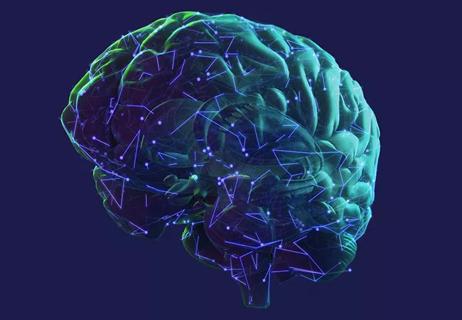Cleveland Clinic Cognitive Battery identifies at-risk patients during Medicare annual visits

Primary care clinics at two Cleveland Clinic hospitals in Northeast Ohio — Hillcrest and South Pointe — are screening Medicare patients 65 years and older for cognitive dysfunction during their annual check-ups using a validated homegrown pair of test modules known as the Cleveland Clinic Cognitive Battery (C3B). Taken independently without supervision using a tablet computer with headphones, the screening test fulfills Medicare requirements for cognitive assessment as part of an annual wellness visit and thus is eligible for reimbursement.
Advertisement
Cleveland Clinic is a non-profit academic medical center. Advertising on our site helps support our mission. We do not endorse non-Cleveland Clinic products or services. Policy
After a patient completes the battery — typically in less than 15 minutes — results are automatically adjusted by age, sex, race and education level and transferred to the electronic medical record (EMR). They are immediately available to the patient’s physician, allowing for follow-up to be promptly scheduled for those identified at risk.
“Our team feels good about incorporating C3B into our annual Medicare examinations, as it’s easy to use and detects cognitive decline better than traditional primary care screening tools,” says Brent Anstead, MD, a family medicine physician at Cleveland Clinic Hillcrest Hospital. “Most patients have been very positive about the experience, expressing appreciation that we are covering cognitive concerns.
The C3B test consists of two self-administered parts: a visual memory test (recalling the location of pictures in a grid) and a processing speed test (matching numbers to symbols). The program provides auditory test instructions, so staff time is limited to setting the patient up with the tablet computer and headphones. The tests are explicitly designed for use by people of different cultural backgrounds and educational levels.
During validation testing (detailed in the Journal of Alzheimer’s Disease [2023;92[3]:1051-1066] and summarized in a previous Consult QD post), the C3B proved to more accurately discriminate mild cognitive impairment from healthy aging than the Mini-Cog©, a frequently used cognitive screening test in primary care settings. The C3B also was demonstrated to have a 92% completion rate and have consistent results in distracting settings, such as a clinic waiting room, and across repetitive testing, enabling the test to be used for monitoring.
Advertisement
“Notably, the C3B is designed to be completely self-administered and automatically added to the patient record,” says Stephen Rao, PhD, Director of the Schey Center for Cognitive Neuroimaging at Cleveland Clinic and staff in the Lou Ruvo Center for Brain Health, Cleveland. “These qualities allow cognitive screening to be low-cost and easily integrated into the normal workflow of a primary care clinic.”
Dr. Rao, who led the C3B’s development, adds that not only does the test perform significantly better than commonly used cognitive screening assessments, but it is far more reliable than reports of suspected mental decline from patients or their relatives. “Having a more accurate screening test reduces the waste of resources on unnecessary follow-up testing and neurology referrals,” he says.
Dr. Anstead notes that in his clinic, staff have been providing the test to Medicare patients in the examination room after their regular physical. Once his patient completes it, Dr. Anstead looks at the results and returns to either let the patient know that no problem has been detected or that “it looks like you struggled a bit and we’ll need to follow up.”
Depending on screening results, patient age, family history and other medical conditions, Dr. Anstead may immediately order laboratory or imaging tests to search for possible reversible or treatable causes of cognitive decline. He also schedules a follow-up primary care visit devoted exclusively to cognitive concerns, or he may refer the patient to a geriatrician or neurologist for more complete assessment.
Advertisement
Early results from the rollout in the two hospitals include 49 screens, with nine patients meeting the threshold for further evaluation. All patients were able to complete testing, taking a median of 14.2 minutes to do so.
Dr. Anstead reports that initial glitches have been minor and centered around technical computer issues that were successfully addressed. He feels that the way screening has been integrated into his clinic’s workflow seems best for now but may later change to having patients complete the C3B in the waiting room before their appointment. For other clinics that will start using the system, he advises flexibility in finding the best fit for incorporating the test.
During this rollout phase, Dr. Anstead reports that Cleveland Clinic primary care, geriatric and neurology providers, as well as members of the EMR support and C3B teams, are meeting weekly to better standardize and streamline further testing and referral protocols.
After more experience is gained, Dr. Anstead expects that C3B screening will be expanded throughout the Cleveland Clinic health system. A commercialized version of the battery is currently under development for use outside Cleveland Clinic.
For additional validation of the C3B and to refine thresholds for identifying patients in need of more assessment, Dr. Rao is spearheading a nationwide multisite clinical trial to include Cleveland Clinic and other large medical centers with primary care clinics. The trial population will involve a group of 900 participants over age 65, with equal numbers of men and women. The trial will compare C3B results with more complete dementia evaluations, using clinicians blinded to the C3B scores.
Advertisement
“Recognizing mild cognitive impairment and early dementia before manifestations become obvious is a national imperative,” says Dr. Anstead, “especially now that we have identified lifestyle modifications and developed pharmaceutical interventions that are most effective when started early. Making highly sensitive and easily administered cognitive screening a routine part of Medicare annual wellness visits can be a game changer in detecting more people who can still take steps to achieve longer independence.”
“We’re excited to see this important tool for detection of early-stage cognitive decline developed for use in the outpatient setting,” adds neurologist James Leverenz, MD, Director, Lou Ruvo Center for Brain Health, Cleveland. “Linking it to the annual Medicare visit allows comparison of test performance over time at the individual level and provides the primary care clinician the opportunity to detect early concerning cognitive changes. In the new era of disease-modifying therapies for disorders such as Alzheimer’s disease, and in view of evidence of the importance of treating reversible disorders such as sleep apnea and hearing loss, early detection is critically important for treatment success.”
Advertisement
Advertisement

Initial results show good accuracy of scalable, low-cost tool for flagging cognitive decline

Structured data helps identify older adults at risk for poor outcomes, defines patients who require more comprehensive assessments

Self-administered tool can be completed in 10 minutes in waiting room

Large NIH-funded investigation is exploring this understudied phenomenon

Machine learning study associates discrete neuropsychological testing profiles with neurodegeneration

Study suggests inconsistencies in the emergency department evaluation of geriatric patients

Early screening — and shorter boarding times — benefit older adults

Also will assess ability of high-intensity exercise to offset the cognitive decline